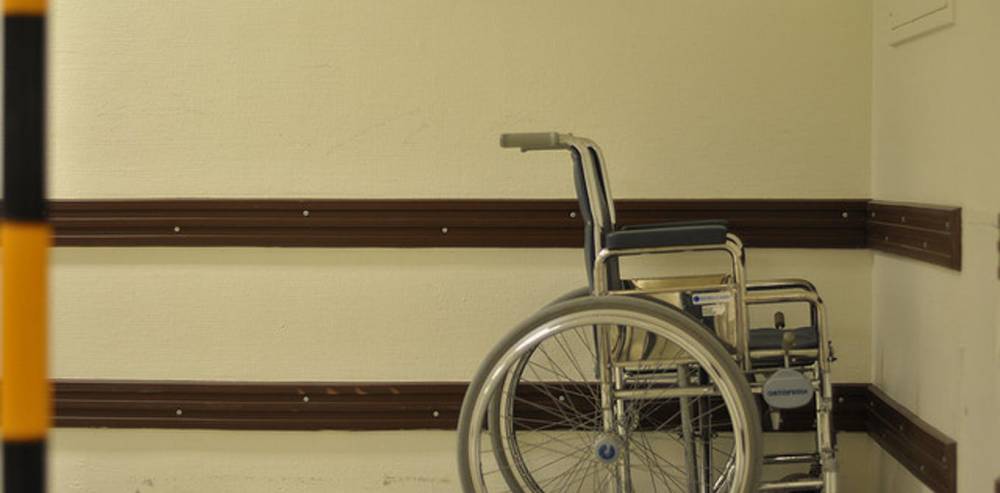
There have been two horrific aged care stories in the media this past week alone – one Queensland woman was found tied to a chair for 12 hours a day, while a South Australian woman was hospitalised after an alleged assault by a care worker.
These were just two cases that reached the media this week. There are likely to be other cases that have not been reported to police, or been picked up by the media.
In light of these, as well as countless other recent cases of elder abuse, the topic of installing cameras in residents’ aged care rooms has once again been brought up.
It’s frequently a topic of debate, with people on both sides arguing why we should or shouldn’t be installing CCTV.
Though many cases of elder abuse do get reported to the police, management and the Aged Care Complaints Commissioner, there are still many that do not get reported.
This could be for a number of reasons; residents may fear that if they complain then the abuse will get worse.
Some elderly or their families may fear that they do not have enough evidence against their attacker – the carer or staff member that is tasked with their daily care. This is especially the case when the victim has no physical marks or evidence, and there are no witnesses.
For some victims, it takes their family to notice changes in behaviour and bruising to make a complaint – and even that may not be enough to file charges.
This was the case with a South Australian resident who left with a black, swollen eye and bruised left hand.
The victim claimed a male nurse hit her, while the nurse alleged that the resident hit herself in the face with the table when she went to reach for her beverage. It was his word against hers.
Having cameras in aged care facilities would inevitably increase the security. It would give those scared, voiceless residents and their families the concrete evidence they need to fight their case.
It would also stop staff from believing they can get away with unacceptable behaviour.
There have been arguments made against installing security cameras in people’s private rooms in the aged care facility.
The biggest being that it is an invasion of privacy, of the resident and the staff working there.
Because of the limited cognitive abilities of some of the residents, they cannot give consent or may not understand what having cameras in their rooms entail.
Some may suggest that in those situations, it is up to the family to give consent – which can be a challenging grey area in terms of human rights.
Some facilities have strict rules that prevent families from putting cameras in their loved one’s bedroom, though they will have cameras in common areas.
One high profile case of elder abuse was reported by the ABC when a daughter’s secret camera captured abuse of her elderly father in his aged care facility – which included an attempted suffocation.
When the footage was shown to the facility’s management, they ended up forbidding the daughter from any further recordings.
They instead sent her a letter to cease and desist from filming, as if she was the problem. They had accused that the woman had breached the Privacy Act, the Aged Care Act and Video Surveillance Act.
Fortunately for the family, the footage was found to be admissible and the staff member was later convicted.
There should be zero tolerance to this type of abuse and operators need to put all systems in place to ensure our elderly are safe. After all if your mother or father was violently assaulted would this be acceptable? The answer – of-course is no, so regardless of whether it’s one case or thirty cases – we need to protect our elders.
It must be said that whilst these are not isolated incidents, aged care workers generally speaking are there for the right reasons and care very much for the elderly. The intention to publish this article is not to give the industry or profession a bad name but we need to bring light to these issues.
What do you have to say? Comment, share and like below.
Definitely agree with security cameras as well as voice recognition – need to hear what some of these staffers say to the elderly resident
Have been through this problem
Working in the industry I believe most of the carers and staff are there for the right reasons and the shock value of these sort of recordings is what plays on people most.
In an acute setting when a Patient gets angry a code grey is called and there are all sorts of people to support the staff member however in aged care the staff are bitten, scratched, hit, had feaces thrown at them verbally abused. These people reach the stress levels quickly, burn out is a big issue and self care in the healthcare area is not done well. So before everyone jumps on the bandwagon about uncaring staff, maybe you should work a week in their shoes and see what you want to do at the end of it